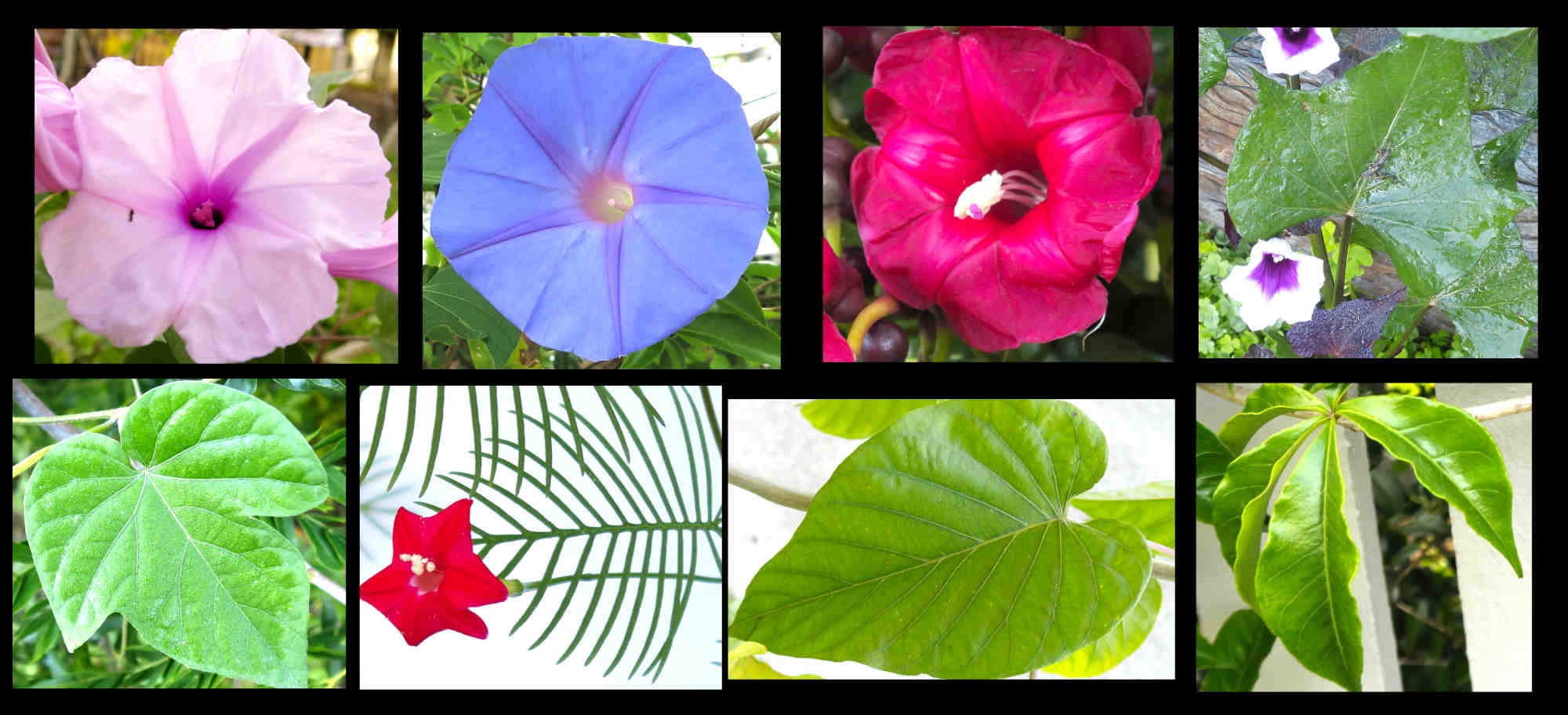Ipomoea.
The Morning Glorys and Bindweeds are in Family Convolvulaceae > Tribe Ipomoeeae.
Mabberley recognises around 600 species, Plants of the World Online 741 and World Flora Online 895.
Australia has 45 to 50 species that are native or naturalised.
The herbaceous perennials are mostly vines or lianas (woody vines) with some shrubs.
The prostrate, climbing or trailing stems can be up to 10 m long.
They climb using twining stems which can be smooth or have small white or yellow hairs.
The alternately arranged leaves are mostly on petioles that can be up to 8 cm long.
The roughly round blades are from around 5 to 20 cm long and 3 to 20 cm wide.
They can be entire (undivided), shallowly to deeply lobed or finely dissected into linear lobes.
When lobed there can be 3 to 5 (7 to many) lobes sometimes with wavy edges.
The base can be rounded, heart-shaped or the basal pair of lobes may extend sideways (hastate).
There may be no hairs, or simple or glandular ones on the lower or both surfaces.
Axillary inflorescences are usually on a stalk or peduncle a few mms to 15 or 20 cm long.
The inflorescence can be a solitary flower or a few to many along a central midrib or rachis.
They rarely branch and the upper flowers open before the lower ones.
Flowers are usually on stalks or pedicels a few mms up to 2 or 3 cm long.
The pedicels may have bracteoles that can be tiny scales to leaf-like.
The 5 free sepals, usually of unequal lengths are in 2 whorls.
The ovate to elliptic sepals, often under 1 cm long may have small hairs on the edges.
The 5 petals are fused into a funnel or bell-shaped corolla up to 10 cm long.
The flaring top may have a smooth edge but often has 5 rounded, mostly shallow lobes.
There are 5 faint or prominent radial mid-petaline bands that may have some hairs.
The white, red, pink, blue to purple corolla may have the throat or bands of a different colour.
The petals are folded in the bud.
The 5 stamens, usually of different lengths insert near the base of the corolla tube.
There are often hairs on the lower part of the filament and adjacent corolla.
The anthers, opening through longitudinal slits lie in the throat or slightlhy outside it.
Around the base of the inferior ovary there may be an annular or lobed nectary disc.
The ovary has 2 (3 to 5) locules and 4 ovules.
The slender style has a spherical (capitate) stigma or one with 2 or 3 lobes.
The stigmas lie in the throat or just past it.
The fruit are capsules, mostly loculicidal and around 1 cm long with 4 (3 to 6) chambers or valves.
The up to 4 seeds may be smooth or have short and/or long hairs.
J.F.


